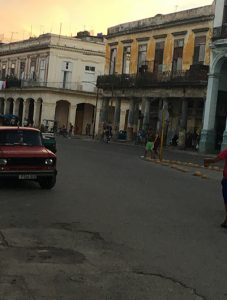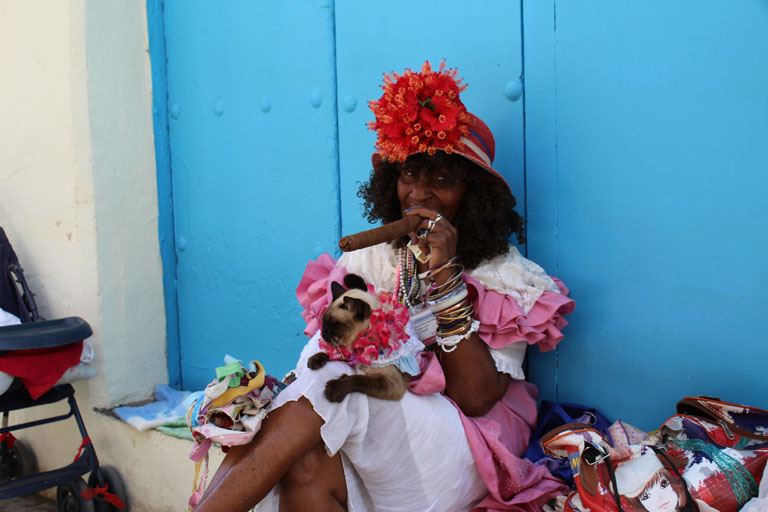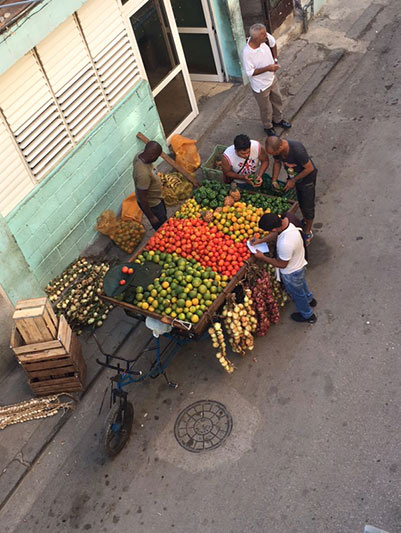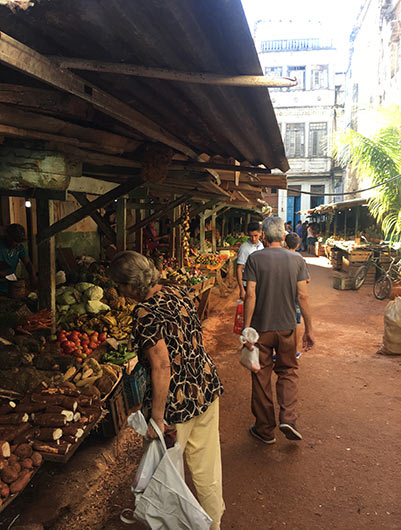Kevin Kleiner: Student Report from 2017 Alternative Winter Break in Cuba
Our engineering trip to Havana, Cuba allowed me to engage in an economic development service project and personally experience their unique society and everyday activities. The historic city of old Havana has a very interesting culture and environment different from the majority of areas in the US.

One noteworthy aspect was the communal style of living. The people seemed encouraged to support each other, manage and visit businesses open to the public, and interact with the tourists in the more popular areas. In particular, many of the residents were spending time outside and interacting with neighbors very frequently during the day. I noticed this tendency each time our group walked through the city. Some people chose to manage fruit and vegetable stands, and many others spent a lot of time outside on the sidewalks and streets.
On most US streets, people are encouraged to stay off the roads for safety. However, the Cuban residents are walking, talking, and playing on almost every pathway in old Havana until an incoming car honks for them to move. When I traveled in the classic cars through the urban narrow roads, many of the people on the streets only reacted to the car’s trajectory when we got very close.
Although the living conditions of some inner-city buildings needed updating, I rarely noticed any difficulties with life or lacking of overall happiness. It seemed the government’s social services, health care, and family contributions to chores/errands plays more of a role in leading a successful lifestyle. The communal ways of living meshed well with the large bodies of tourists to enhance my experience of visiting Cuba.

I often felt a sense of constant motion, and I learned about the locals and their interesting culture. Specifically, many of the stores, restaurants, and homes kept their doors open during parts of the day to facilitate the collectivist culture. I realized how this action symbolized inclusiveness and open invitations to the community of Cuba and nearby tourists, and we actively engaged with those values.
The environment of Havana also reflects Fidel Castro’s significant changes to the Cuban government following the revolution in 1959. Specifically, by overturning the dictator-like reign of President Batista, Castro planned to shift the focus of the government to the people. Much of the propaganda from the time (displayed at the Museum of the Revolution) advocated for solidarity with all Cuban citizens to assure collective victory. Despite many of his means being questionable, the ways of living in Havana still seemed to retain the core of his initial message even decades later.


Our service project had relevance to this community lifestyle. We made electrical connections for lighting on the Casa Blanca hillside near the “Cristo” monument in Havana. The purpose was to allow visiting groups and campers to have nighttime activities in that area. While I learned several specialized skills such as dealing with electrical wiring, I always maintained the underlying motivation of serving the Cuban people to improve their quality of life. Prior to our work, there were beautiful plant-filled pathways, but the area remained dark at nightfall. In this way, we contributed to the Havana community, and we extended the location options for people to visit. Overall, our alternative winter break service trip to Cuba was eye opening, and I learned to appreciate and respect the Cuban culture.